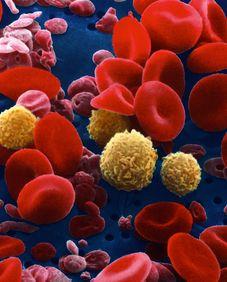Ross & Wilson Anatomy and Physiology in Health and Illness (5 page)
Read Ross & Wilson Anatomy and Physiology in Health and Illness Online
Authors: Anne Waugh,Allison Grant
Tags: #Medical, #Nursing, #General, #Anatomy

There are only a few of these
cascade
or
amplifier
systems in the body. In positive feedback mechanisms, the stimulus progressively increases the response, so that as long as the stimulus is continued the response is progressively amplified. Examples include blood clotting and uterine contractions during labour.
During labour, contractions of the uterus are stimulated by the hormone
oxytocin
. These force the baby’s head into the cervix of the uterus, stimulating stretch receptors there. In response to this, more oxytocin is released, further strengthening the contractions and maintaining labour. After the baby is born the stimulus (stretching of the cervix) is no longer present so the release of oxytocin stops (see
Fig. 9.5, p. 212
).
Homeostatic imbalance
This arises when the fine control of a factor in the internal environment is inadequate and the level of the factor falls outside the normal range. If the control system cannot maintain homeostasis, an abnormal state develops that may threaten health, or even life. Many such situations, including effects of abnormalities of the variable factors in
Box 1.1
, are explained in later chapters.
Survival needs of the body
Learning outcomes
After studying this section you should be able to:
describe the roles of the body transport systems
outline the roles of the nervous and endocrine systems in internal communication
outline how raw materials are absorbed by the body
state the waste materials eliminated from the body
outline activities undertaken for protection and survival.
By convention, body systems are described separately in the study of anatomy and physiology, but in reality they work interdependently. This section provides an introduction to body activities, linking them to survival needs (
Table 1.1
). The later chapters build on this framework, exploring human structure and functions in health and illness using a systems approach.
Table 1.1
Survival needs and related body activities
| Survival need | Body activities |
|---|---|
| Communication | Transport systems: blood, circulatory system, lymphatic system |
| Internal communication: nervous system, endocrine system | |
| External communication: special senses, verbal and non-verbal communication | |
| Intake of raw materials and elimination of waste | Intake of oxygen |
| Ingestion of nutrients (eating) | |
| Elimination of wastes: carbon dioxide, urine, faeces | |
| Protection and survival | Protection against the external environment: skin |
| Protection against microbial infection: resistance and immunity | |
| Body movement | |
| Survival of the species: reproduction and transmission of inherited characteristics |
Communication
In this section, transport and communication are considered. Transport systems ensure that all cells have access to the internal and external environments; the blood, the circulatory system and lymphatic system are involved.
All communication systems involve receiving, collating and responding to appropriate information. There are different systems for communicating with the internal and external environments. Internal communication involves mainly the nervous and endocrine systems; these are important in the maintenance of homeostasis and regulation of vital body functions. Communication with the external environment involves the special senses, and verbal and non-verbal activities, and all of these also depend on the nervous system.
Transport systems
Blood (
Ch. 4
)
The blood transports substances around the body through a large network of blood vessels. In adults the body contains 5 to 6 litres of blood. It consists of two parts – a fluid called
plasma
and
blood cells
suspended in the plasma.
Plasma
This is mainly water with a wide range of substances dissolved or suspended in it. These include:
•
nutrients absorbed from the alimentary canal
•
oxygen absorbed from the lungs
•
chemical substances synthesised by body cells, e.g. hormones
•
waste materials produced by all cells to be eliminated from the body by excretion.
Blood cells
There are three distinct groups, classified according to their functions (
Fig. 1.6
).
Figure 1.6
Coloured scanning electron micrograph of blood showing red blood cells, white blood cells (yellow) and platelets (pink).
Erythrocytes
(red blood cells) transport oxygen and, to a lesser extent, carbon dioxide between the lungs and all body cells.
Leukocytes
(white blood cells) are mainly concerned with protection of the body against infection and foreign substances. There are several types of leukocytes, which carry out their protective functions in different ways. These cells are larger and less numerous than erythrocytes.
Platelets
(thrombocytes) are tiny cell fragments that play an essential part in blood clotting.
Circulatory system (
Ch. 5
)
This consists of a network of blood vessels and the heart (
Fig. 1.7
).


